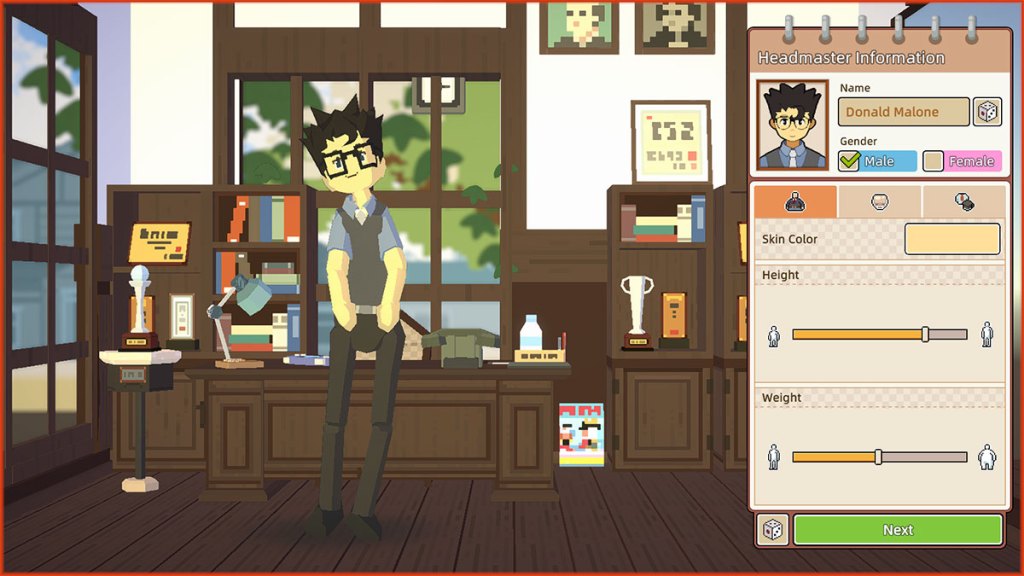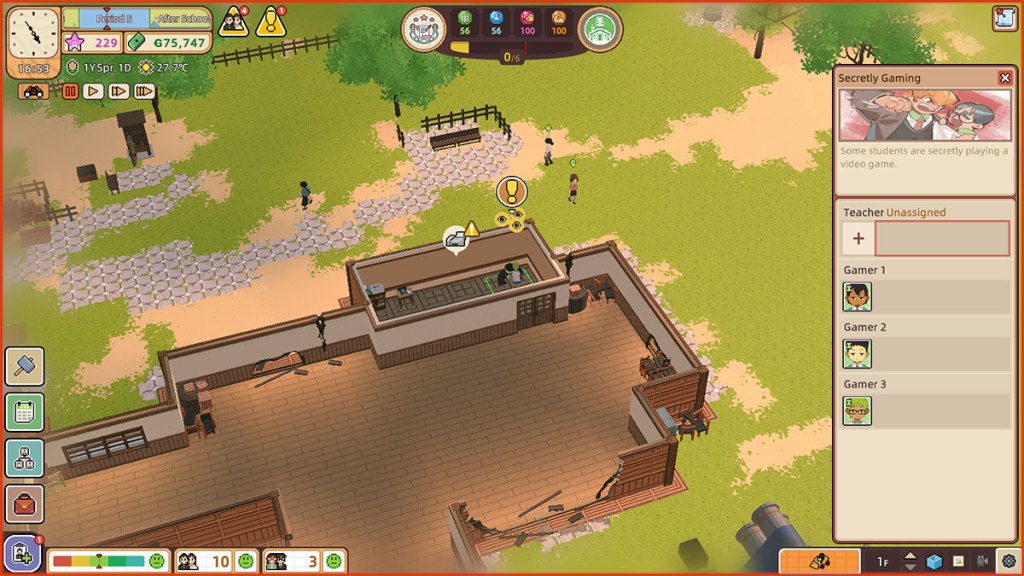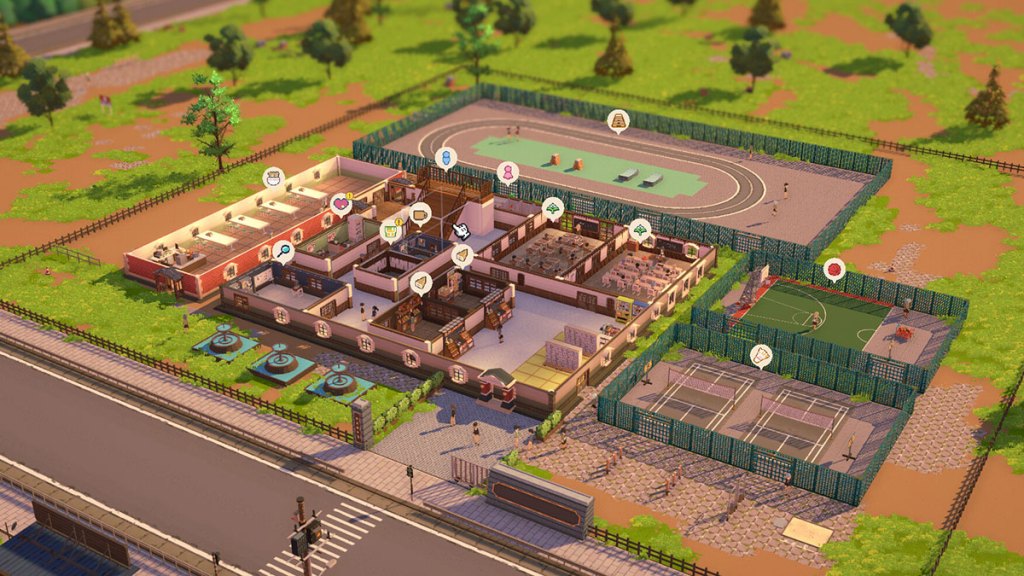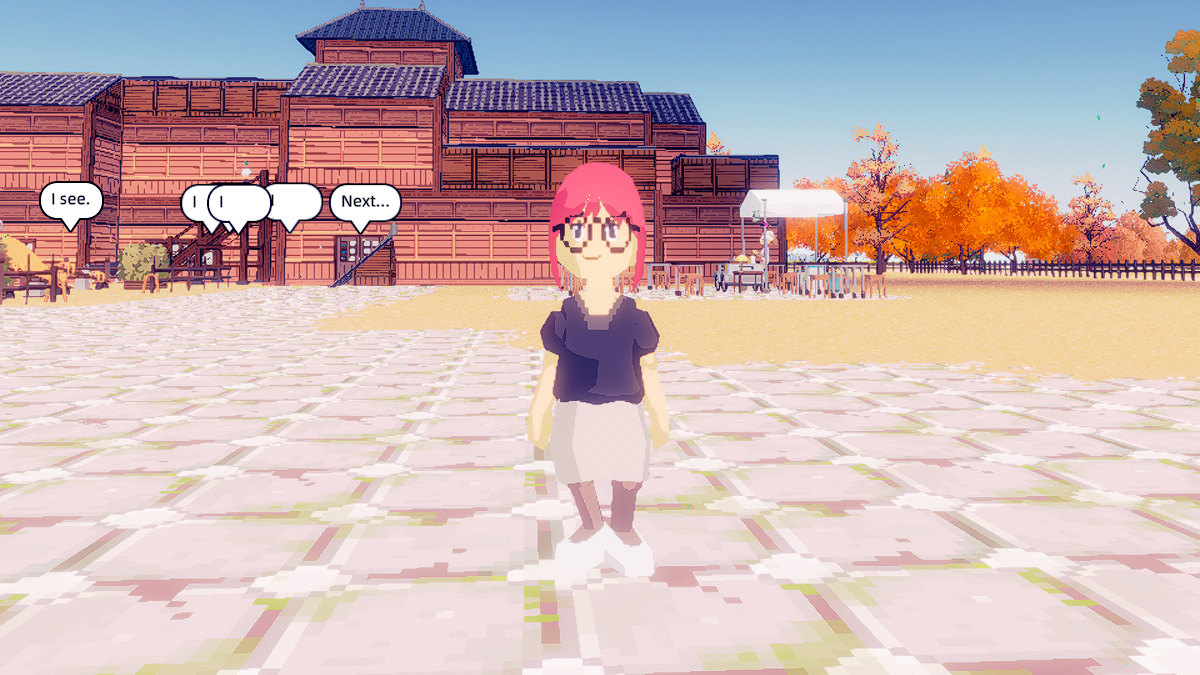Management simulators tend to pick a topic or theme and stick within the set confines that define them. Managing a park requires no consideration outside the boundaries of a property, and even city management titles hem players into a single location, no matter how sprawling it may be, that becomes an entire ecosystem. Let’s School bucks this trend with what seems like a relatively simple concept. Sucking players into deep water when they thought they were going for a summer paddle.
Key Details
- Developer – Pathea Games
- Platforms – PC (Steam)
- Release Date – July 27, 2023
- Price – $19.99
Related: Let’s School Complete Guide: Early Tips & Tricks, How to Get The Best Grades, and Stats Explained
Running a School is so Much Harder Than You Think

The premise of Let’s School is that players are the new headteacher of a dilapidated school in a rundown part of town. They need to fix it up, build some usable classrooms, and start giving local students the opportunity to learn and earn the best grades possible. It’s a noble cause, giving the youth of today a better future. But the path to getting those grades is so far from simple.
The game starts players off slow, only able to host one class run by two or three teachers. Research and staff rooms are unlocked over time, and by the end of the first semester, students should be in a relatively good place and achieving top grades. It instills a confidence that saw us double down on researching advanced classes, teacher training, and new rooms to outfit the school with.
The mechanics are simple and easy to master, exactly what any management sim fan will expect to see. You mark out buildings, define them as various rooms, and fill them with the required furniture to get things moving.
With the second semester comes the crushing reality that a class needs to be with the school for three entire semesters before they’re fully graduated and onto a better, more educated path. These students require more advanced classes from teachers with a better teaching rating, and those requirements will only increase with the final semester.
While those early classes advance, new students need to be admitted to ensure money keeps coming into the school to fund research, hiring, and the construction of more facilities. A growing school has growing needs, and no matter the quality of the grades, a school can fail if it doesn’t meet the needs of its staff and students.
This is where I think Let’s School gets really deep. It highlights the tumultuous day-to-day for teachers and students, both parties that ask why it’s so hard for their needs to be met, and puts players in the shoes of those trying to meet them. Without an infinite supply of money, it’s impossible, and tough decisions need to be made as to which needs are met first.
Don’t let that be a downer because this game is incredibly addictive. There wasn’t a day I played it that I wasn’t up at midnight looking through schedules, needs, and classes to see where I could improve for the next day.
Build, Address Needs, Repeat

A very basic explanation for an average session in Let’s School is this. You’ll build a classroom, admit students, assign teachers, and see those students through to passing their exams. There are so many more layers to the game than this, though.
Some classes must be unlocked through research, particularly those for later semesters. More students and staff mean the school needs expanded or additional facilities that must be built. Each room has a management cost, resulting in the headteacher being overburdened and the need for more management heads.
This is all without mentioning the contraband you can take from students, outbursts in class, protests or fights, and so much more that happens each day. You can’t look away from the screen for a second because you’ll miss something, and one tiny issue can bring a school to its knees in a single day.
The problem that nearly broke my school early on was entertainment. I hadn’t researched any and all my students were miserable. It took me weeks to get them a playground and they hated me up until the point it appeared.
Thankfully, Let’s School provides some exceptional management tools to monitor these issues with. There are views for everything, allowing you to see where your drinking water is, a hygiene and safety map, entertainment layouts, and so much more. It’s extremely helpful and adds a sense of strategy to a game that needs you to have that information without it being a spreadsheet or list of words.
My one caveat is that the UI for the data players need could be more streamlined. There’s so much to digest, and without exploring it for yourself and familiarizing yourself with the areas you need to see most of the time, you’ll struggle to follow what’s happening on the fly. This can cause progression to stutter when what you want is to slow down the speed to monitor grades and other data before speeding up to maximum to watch the day play out.
Endlessly Charming

Three essential aspects of any management sim are great visuals and animations, an enjoyable building mechanic, and fantastic music. Let’s School has all three of these. The visuals and animations are cute and cozy, making any school easy on the eye. Everything is easy to locate and identify, leaving no confusion when you’re looking for a room with problems that need addressing.
The music fits with the visuals and never got on my nerves or became dull and boring. It’s a small thing, but you’re going to be listening to that soundtrack for a very long time once you’re fully indoctrinated. Thankfully, it’s peaceful and chirpy enough that you won’t realize you’re irrevocably addicted to yet another management simulator until it’s too late.
Finally, Let’s School has fantastic building mechanics across its campaign and sandbox modes that inform you of the essential furniture for a room. Stats for each room demonstrate what else needs to go in there for student and teacher satisfaction, but you develop muscle memory for all of it within a few room builds.
I was impressed by how quickly I got to grips with building in the game. Usually, I’m pretty terrible and opt for set rooms or full set builds so I don’t need to think too hard and miss objects, but in Let’s School, it was never a problem. I think this should make the game easy to grasp, even for those that don’t play many management simulators.
Progressive Progression

All too often, I play management simulators that pile on mechanics in an incredibly short space of time and leave you to sink or swim. Let’s School’s pacing is just right, allowing players to master each mechanic so that the next time it rears its head, they’re already on top of it.
For example, temperature only becomes an issue on the hottest and coldest of days but impacts every room and can cripple a school. The game tells you about this once, but it’s powerful enough that I picked up on the warning signs each time that followed, installing the appropriate furniture before students were on the premises.
As time goes on, players will be encouraged to explore new areas of the map around the school with field trips. These open up opportunities to scout new locations for more students, bringing in extra cash and new people with higher aspirations that can improve the school’s reputation. Every system plays into another, meaning no one task is self-contained.
Research leads to class improvement and the ability to hire better staff. It also unlocks paths to more research that may allow for rooms with additional management capabilities, something every school lives or dies on.
There’s nothing worse in this type of game than feeling like you’re getting to the end of something and that an upgrade has no real purpose. If it’s too advanced, it won’t help multiple aspects of what you’re managing. Let’s School’s research and advancement mechanics for teachers have at least three areas of focus, meaning there’s always some new aspect to the school that can benefit from even the most basic mechanics.
This leads to a satisfying experience and constant sense of stress because no matter how in control you might feel, that control can slip through your fingers so very quickly.
Realistic School Simulation

Let’s School is stressful to play, but in a manageable way. It asks nothing more than for your full attention, and you’ll do just fine if you give it that. Every problem has a solution, and it’s usually that you’ve focused on the wrong area of building, research, training, or something else that you thought the school needed.
Each school is an ecosystem that evolves while you play, and that’s just how schools work in real life. Outside influences must be considered because they impact funding and attitudes that can snowball into destruction if ignored.
I had the best time trying to balance student needs with making the school appealing to outsiders. Management and the flow of it was also right up my street because it gives you the power to help each facility without them all reporting to a single person. It’s so much more realistic than other management sims where one person runs everything, and that’s what makes it so addictive.
Even relationships with other schools, businesses, and parents come into play. If you can think of something you experienced in school, it’s probably lurking somewhere in Let’s School. Bullying, portable games consoles, pranks, students demanding gallons of water, it’s all in there. It makes me feel bad for being such a pain in school because it shows how the head teacher sees and hears everything, and it’s all dealt with one way or another.
The Verdict

Schools are incredibly stressful environments to work in. Students are expected to achieve, even though they might not have that desire all the time, and teachers are judged based on outcomes they have little control over. They can instill knowledge, but it’s up to the students to demonstrate it in an exam, and not everyone performs well in an exam.
Let’s School doesn’t go this deep with its simulation, but it’s a reminder that those we trust with the most precious things in our lives are worthy of a little slack. They have a huge weight on their shoulders and little funding unless they willingly overstretch themselves. I felt that pain while playing the game, and it gave me a new perspective on the entire school system.
It’s easy to see each new mechanic as another way to stretch the game and add content, but the fact is they’re more than that. Teachers deal with everything in Let’s School and more, making it the most accurate school management game out there. If you want a challenge and something that’s going to push you beyond the limits of other management sims, this is the perfect game to pour dozens of hours into over the next few months.
Final Score:
8/ 10
| + Fantastic building mechanics, visuals, and soundtrack. | |
| + Realistic school simulation in every element. | |
| + What feels like an endless list of tasks to complete even when you’re on top of things. | |
| – Some systems could be better explained in tutorial messages. | |
| – Better direction in research would alleviate some early game mistakes | |
| – Easier to follow UI would make life vastly easier. |
Gamepur team received a Steam code for PC for the purpose of this review.







Published: Jul 26, 2023 01:25 pm